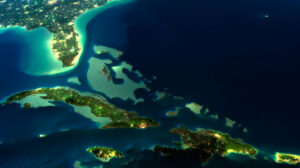New evidence has emerged in the ongoing debate about whether or not there’s water on Mars. In a study led by the University of Cambridge, scientists examined the topology of Martian ice sheets and found signatures that match subglacial lakes here on Earth.
Evidence abounds to show that Mars was a warm and wet oasis in its distant past, but whether any liquid water remains near the surface today has been less clear. The breakthrough seemingly came in 2018, when radar instruments aboard the Mars Express orbiter revealed bright spots beneath the ice caps at the Red Planet’s south pole, consistent with signatures given off by lakes of liquid water beneath ice sheets in Greenland and Antarctica.
Scientists on that study estimated that the lake sat below 1.5 km (0.9 miles) of solid ice, and stretched about 20 km (12.4 miles) wide. Temperatures there would drop to -68 °C (-90 °F), but the lakes would remain liquid thanks to high salt content and pressure that lowers the freezing point of the water. Another hypothesis suggests that Mars may still be volcanically active, and this geothermal heat could keep the water warm enough to be liquid. Follow-up observations found evidence of several other buried lakes in the area, too.
Read more: New Atlas
Ask me anything
Explore related questions





